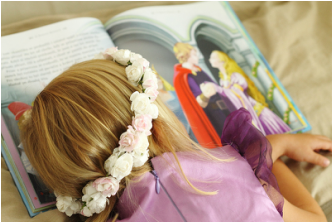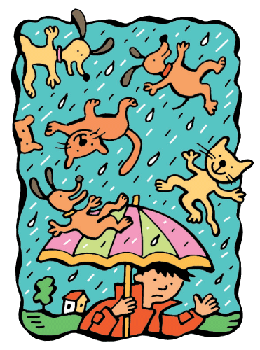 Unit Plan: Once Upon a Time: Demonstrating Social Responsibility Through Storytelling Lesson Subject: English, ESL and other Language Arts Grade Level: Middle School (Gr. 6-9) As a follow up to my post about Aida Walqui’s article Scaffolding Instruction for English Language Learners: A Conceptual Framework I have provided a sample unit plan where I have focused on including scaffolded instruction and considered both Lev Vygotsky’s Sociocultural Theory and Zone of Proximal Development. In this unit plan I am asking students to create their own stories and work at a high English level, however I have provided structure to support them reach this level. I have considered learners and placed the expectations of the final culminating assignment within a zone of proximal development where the task requires students to reach beyond their current level towards what they are capable of achieving. The lesson has been created with a lot of structure and a lot of space for flexibility. In class working time has been planned for, to provide the teacher and peer tutors (if available) time to actively support the learning process. The unit has been designed with explicit and scaffold instruction. Students’ learning will take place through the active use of the English language in a creative and natural way.
0 Comments
 In ESL/ELL instruction Readers Theatre is a strategy that comes up often. Whenever I have looked at Readers Theatre I have often found the lessons or units to be overly detailed and wanted to find a way to simplify the concept. As well, I wanted to ensure my students were gaining practice with the four language skills; reading, writing, listening and speaking. So, I did some research online and came across several Readers Theatre ideas, and a few things I might like to try. The lesson below is a loose planning of a Readers Theatre lesson and not specific to any script. I hope it can support you in your lesson planning and maybe simplify the concept of Readers Theatre for you. Included in the lesson plan are several suggested modifications and accommodations for the range of learners in any given class.
 Objective: To engage students in thinking and discussion using art. Student Development:
In November last year I wrote about art appreciation and Chicago's Concordia University art lessons. At the time I was using the art lessons with a weekly group of grade sevens I taught during the school's weekly "English Corner". Since the art appreciation lessons were so well received with the grade sevens I decided to introduce the lessons to my grade eight class in the second term of the school year. I selected several pieces from the Concordia lessons and had them printed on card stock to use as handouts, which would then be put on the wall as a collection of pieces we had looked at. Each lesson started with a brief introduction of the piece where I would give the title, artist's name and the date it was created. Then, showing the piece on a projector and providing one printed on card stock, students were asked to fill in the attached handout and start to analyze the piece. I encouraged students to get up and walk around the room, viewing the piece from different angles. The handout provided prompts to guide student's thinking. At the bottom of the handout I asked students to consider their feelings when they look at the piece and why they think it was created. After about 25mins I would provide students with biographical and historical information about the artist and the piece. To conclude the lesson we would have a class discussion about the piece, discussing points from the handout and exploring thoughts and opinions of the peice.
 This term one of the units in my student’s textbook is themed “Endangered Animals.” Using the theme I made an assignment where students had to create fact sheets for different endangered marine animals. Students were first in groups of 2-3 and then in larger groups of 4-6. Attached is the lesson plan I used for this activity, along with the factsheet template and grading scale I used. To narrow the focus in class I chose to have students write about marine animals, however there are many options for this lesson. In the PDF I have provided some good websites for endangered animal resources.
 Objective: To introduce students to common idiom expressions and have them actively build expressions into sentences for deeper understanding. To first understand the reason why teaching English Language Learners (ELLs) idioms is important we first have to understand what they are. Idioms are cultural phrases, which cannot be understood by knowing the individual word meanings alone. For example, “raining cats and dogs.” It is understood that the sky cannot literally rain cats and dogs, but what then do cats and dogs have to do with the rain? In the meaning of this idiom they represent large and heavy raindrops. To say, “it is raining cats and dogs” is to mean, “it is raining very heavily.” Idioms pose a challenge for ELLs because often they have not been raised in the culture the idiom is being used in. Not being able to understand the meaning of phrases can lead students to misunderstanding and confusing situations. When I have taught idioms with my classes I have first developed a definition I feel is appropriate for their level of understanding and then provided them with an Idioms List Handout (see attached). Students can record the definition on the handout and read pages of idiom examples with their meanings. The Idiom List Handout was compiled using idioms from Idiom Site. There are several other good websites for idioms; including Idioms The Free Dictionary and Using English-Idioms. Once students have had a chance to explore the idioms on their own I introduce the Idiom Activity Handout (see attached) and provide and exemplar, using the idiom “back to the beginning” (see attached). Each student should choose, or be assigned a different idiom to complete the activity. The activity sheets can be displayed in the classroom or put into a book. This is a basic activity that can be built into expanded lessons or used as filler between units or lessons. Students can also be put into pairs to complete the activity. There are many options…enjoy!!
|
Ms. Kolshuk's BlogWelcome to my blog where I post about my teaching practice, ideas, findings and discuss topics of an educational nature. Please feel free to comment and/or email with any topic suggestions.
Categories
All
Archives
July 2017
|
||||||||||||||||||||||||||||||||||||||||||
 RSS Feed
RSS Feed